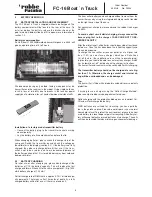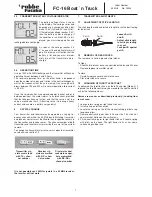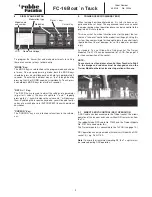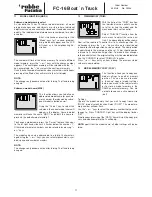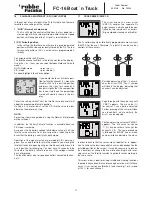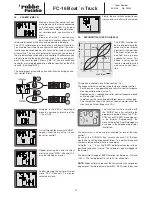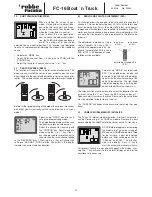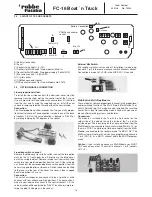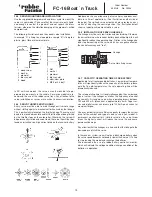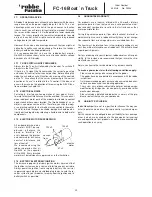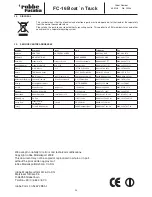
Order Number
40 MHz No. F4044
FC-16 Boat `n Truck
19
26.4 SERVO MOUNTING AND INSTALLATION
Use the supplied rubber grommets and brass eyelet to mount the
servos in your model. Take care that the screws are only tighte-
ned enough to contact the grommet and not squash the brass
ferrules, otherwise the vibration damping of the grommets will be
compromised.
The following illustration shows the correct servo installation.
In example “A” is fixing to a wood plate, example “B” is fixing to a
plastic, glass fibre or aluminium plate.
In RC car/truck models, the servo is usually mounted into pre-
prepared servo mounts in the vehicle. For marine models we re-
commend the use of the robbe servo trays. Pay attention to the
servo installation, as servos are sensitive to excessive vibration.
26.5 SERVO THROW/ SERVO HORNS
Every servo must be able to work throughout its whole range
without stalling against a mechanical limit caused by the linkage.
This is particularly relevant on the throttle linkage. The servo must
be able to move between idle and full-throttle without being limited
by the throttle stops on the carburettor. Otherwise the servo will
be permanently stalled and under load; the servo life will be shor-
tened and it will have a high current drain on the receiver battery.
Robbe servos have a wide variety of servo horns and discs avai-
lable to suit most applications. (See illustration on other side of
the page). The splined servo output and horns provide an easy
means of adjusting the neutral position. The illustration below
shows a typical pushrod mounted to a servo.
26.6 INSTALLATION OF SERVO LINKAGES
The linkage must be very low friction and non-binding. Otherwise
the current drain on the receiver battery pack will be high; this will
significantly reduce the operating time. Friction in the linkage also
leads to poor centring of the servo, which has a negative effect on
the control accuracy and “feel”.
26.7 CAPACITY/ OPERATING TIME OF RX BATTERY
Applicable for all rechargeable batteries: Low ambient tempera-
tures will significantly reduce the capacity of the battery, please
note that in cold temperatures, the safe operating time will be
dramatically reduced.
The safe operating time is strongly influenced by the number and
type of servos, free linkages as well as the frequency of control
movements. A standard servo when operating draws between
150 and 600 mA, idle current is approximately 8 mA. Super ser-
vos and digital servos can draw up to 1300 mA peak current at
maximum torque.
Choose your battery with sufficient capacity to supply the current
drain for the number and type of servos used in your model. A
permanent mechanical limit (stalled servo) on the servo throw
draws the highest current, will reduce the servo life and cause
permanent damage.
Pay attention that the linkages are free and that the linkage to the
device does not stall the servo.
In the receiver system, you will notice a discharged battery when
the servo speed becomes noticeably slower than normal. It is time
to stop running the model and recharge the batteries.
We recommend the use of a robbe battery controller/ monitor,
which will indicate the voltage condition/ charge condition of the
batteries in operation.
4
5
6
1 Nut
2 washer
3 grommet
4 brass eyelet
5 aluminium plate
6 M2,5 or 2,6 bolt
1 woodscrew
2 washer
3 grommet
4 brass eyelet
5 wood
1
2
3
1
2
3
4
5
Servo Horn fixing screw
Linkage


